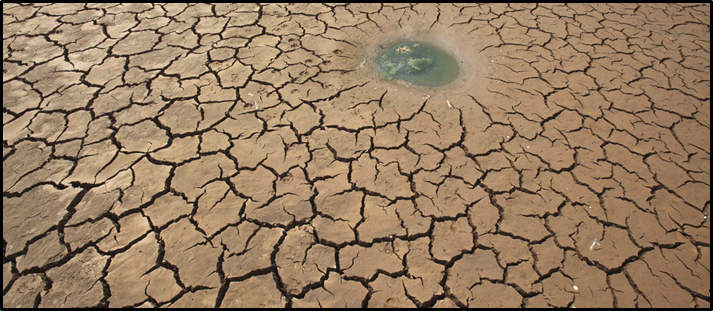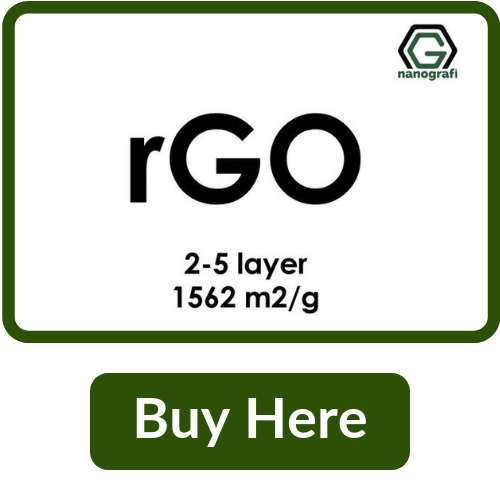Use of Graphene in Water Filtration
Clean water is one of the goals of sustainable development set by the United Nations. Now, it is very easy to filter water through a membrane and without a chemical process, it is possible with graphene. After being identified in 2004, graphene became the finest material that exists in the world. Its particular composition - carbon and hydrogen atoms in the form of honeycomb - plus the tensile strength and electrical conductivity that it possesses, make this substance a promising resource in many applications, particularly water treatment. This article is focused on discussing the use of Graphene for filtering water to make it fit for drinking purpose.
Read: Ultimate Guide to Graphene: Everything You Need to Know About Graphene
First, it is necessary to understand the issue of shortage of water and contaminated water before discussing the use of Graphene for this purpose:
Lack of access to water
Nearly 700 million people in the world do not have access to drinking water. Drinking dirty water has disastrous consequences on the health and nutrition of people, greatly weakening the body. People who drink contaminated water can quickly become malnourished. In fact, 50 percent of cases of child malnutrition is caused by repeated diarrhea and intestinal infections due to dirty water and/or inadequate hygiene.
Despite undeniable progress since 1990, made by governments, NGOs with the support of the United Nations, more than 2 billion people currently do not have access to drinking water. Ninety percent of these people live mainly in rural or remote areas, but the problem would soon be unprecedented, according to climate experts.

Image Source: World Economic Forum, How to Use Nature to Solve Water Shortages
Water in the Sustainable Development Goals
In 2015, world leaders agreed to adopt the Sustainable Development Goals (SDGs), in order to eradicate poverty, protect the planet and ensure prosperity for all by 2030. These goals apply to all countries and cover several sectors, such as climate change or gender inequalities. The number 6 is dedicated to water: Clean water and sanitation for all.
Because of its cross-sectional dimension, water is essential for achieving other goals, such as Zero Hunger, Health and Wellness. Unfortunately, at the current rate of progress. it seems that many countries will not be able to reach the sixth goal by 2030.
Greater efforts and greater investments are necessary to achieve all the objectives, in particular with regard to health and hygiene: national policy adjustments, resource mobilization, national statistical systems are needed to monitor the new SDG indicators, among other things. But the important thing is to provide clean water to everyone on this earth through advanced solutions. This is possible due to the use of Graphene filters because of their high capability.
Use of Graphene for treating water
The Graphene nanoscrolls that MIT researchers have managed to develop could be used to produce, among other things, water filtration systems that are both effective and targeted. The exceptional physical and chemical properties of graphene gave researchers the idea of using this material for the design of water purification membranes. Not only to chemically remove pollutants but also to extract them physically. And these billions of graphene nanoscrolls stacked in layers and able to capture pollutants selectively. This process produces very pure water, without unpleasant taste or bad smell.
Graphene nanoscrolls
Graphene is considered a miracle material, especially in the electronics industry. Unfortunately, the exceptional properties that researchers have already discovered are very complicated and costly to implement. It is about the price issue that US researchers at the Massachusetts Institute of Technology (MIT) and Harvard University are interested in graphene oxide. Due to this, it is difficult to maintain the purity of graphene and implement it at the industrial level, therefore, it requires more research in order to use it in real life. Researchers at MIT and Harvard University are exploiting the oxidized form, imperfect as soiled with atoms of oxygen and hydrogen, but cheaper than the pure material. From graphene oxide and using ultrasonic techniques, they produced nanoscrolls of controllable dimensions. Nanoscrolls are developed with the same mechanical properties as of graphene for only a fraction of its cost.
The idea of using graphene nanoballs is not new but, as we said, the technique is too expensive to be exploited industrially. Researchers had also tried to produce graphene oxide nanoscrolls. The US researchers first implemented a chemical process called the Hummer method to produce graphene oxide sheets from graphite chips. After putting into solution, these sheets of graphene oxide were then simulated using two different ultrasonic methods for the same result: the spontaneous formation of nanoscrolls.
Researchers at MIT and Harvard University have used piezoelectric probes that, when energized and placed in a solution, create sound waves at either a frequency of about 20 Hz or a frequency of about 390 Hz. Waves that stir the environment and create bubbles. When these bubbles explode, they release sufficient energy to initiate the formation of conical nanoscrolls from graphene oxide sheets. And the results of US researchers show that a higher frequency and a shorter treatment can produce larger nanoscrolls and vice versa.
For now, only 10% of the sheets have been converted into nanoscrolls. Researchers at MIT and Harvard University, however, ensure that their technique can be improved to achieve better yields. It can then be included in existing industrial processes, for the production of water filtration membranes.
Treatment of Sea Water
Likewise, scientists have solved one of the biggest problems of humanity: to clean seawater and make it fit for drinking purpose. The recent use, discovered by a team of researchers at the University of Manchester, was a filter that could solve the shortage of drinking water, one of the greatest problems of humanity.
It is to note that 14% of the world population does not have access to drinkable water resources. According to the United Nations Organization, in eight years, 14% of the world population will not have access to drinkable water resources. This problem could be prevented thanks to 71% of water masses that cover the Earth. However, the costs to desalinate part of the oceans did not look viable until the discovery of graphene oxide.
Scientists have developed a graphene-based compound that can be generated after a simple process of oxidation in the laboratory. This helps to create a large sheet of graphene, having the ability to filter the sea water in order to make it drinkable. But how did the researchers achieve that the common salts of the sea did not pass through the material?
Previously, the structure of graphene oxide allowed small nanoparticles, organic molecules, and large salts to pass through it, without getting the common salts of seawater to sink. The reason was that the holes in the sheets needed to be smaller so that the membranes do not swell, allowing the substance to pass through its other molecules.
Now, the innovative step was that the researchers overlaid a thin layer of resin - used for glues - on each side of the graphene oxide fabric, which prevented the membrane from expanding, fine-tuning the properties of the material. That is, controlling the pore space with the objective of improving desalination. The step to follow in the scientific advance is not more than the production of these sheets on an industrial scale and at low cost.
Recent Research on Water Treatment using Graphene
Australian researchers have developed a filtration system with a derivative of graphene capable of purifying any brackish or contaminated water from pollutants. Their process is more energy efficient than traditional filters. An innovation that, according to scientists, would solve some problems related to the lack of drinking water in the world and would help to meet the United Nations’ Sustainable Development Goal 6. Water purification usually involves a complex, multi-stage process, so this breakthrough could have a significant impact on the estimated 2.1 billion people who do not have drinking water to drink in many countries of the Earth.
Improving access to safe water for human health is the challenge of a team of Australian scientists. The filter developed by them retains 99% of the salt in seawater, as well as most impurities and industrial pollutants or those released by individuals into the environment. Their process is based on a particular form of graphene, which is, for the record, a two-dimensional carbon crystal, that is to say, the thickness of an atom forming a microscopic assembly of hexagonal patterns.
This material with amazing properties has the particularity of being hydrophobic, repelling water. Australian scientists have developed a method that makes it easy to obtain the equivalent of graphene from soybean oil, an inexpensive and renewable substance. This GraphAir, named by the researchers, is in the form of a very fine film. By covering the membrane of conventional filtration devices being sold in the market, the device, in a single pass, purifies any brackish or polluted water.
In addition, this graphene filter is relatively cheaper, faster and more environmentally friendly to manufacture than any other filter, because its main component is renewable soybean oil, which also helps maximize the efficiency of purification. Over time, oil-based pollutants can interfere with the properties of the filter, so contaminants must be removed before it can be used again. After multiple tests with the highly polluted waters of Sydney Harbor, the device never got dirty, say researchers who published their results in the journal "Nature". Graphene-based filters can replace all the complex, time-consuming and multi-stage processes currently used by individuals or the water industries.
Conclusion
Water Pollution and shortage of water is a major problem of the World. It is to be noted that 700 million people in the globe don’t have access to clean water. The contaminated water that people drinking gives rise to many diseases, which may also lead to death. In this regard, Graphene has found to be a miracle in the field due to its peculiar structure of high permeable density. Graphene offers the possibility of using it both for the desalination of water and for the purification of water. The studies discussed in this article pointed out that Graphene-based water treatment process can be carried out in a much shorter time and at a much lower cost. The nanoscrolls developed by MIT Researches are very effective for treating water and make it fit for drinking purpose. Similarly, Australian and British Researchers have obtained significant milestones to treat water with Graphene, as discussed in the article.
Recent Posts
-
Advanced Materials for Unmanned Aerial Vehicle (UAV) Protection Against Laser
Consider a UAV on a critical mission, rendered inoperative by a sudden laser attack. With the increa …26th Jul 2024 -
Simulation and Modeling of Material Properties
Our world is composed of a dazzling array of materials, each with its own unique properties that dic …19th Jul 2024 -
Advanced Coatings for Superior Corrosion and Wear Resistance
Corrosion and wear pose significant challenges across various industries, leading to substantial eco …12th Jul 2024







